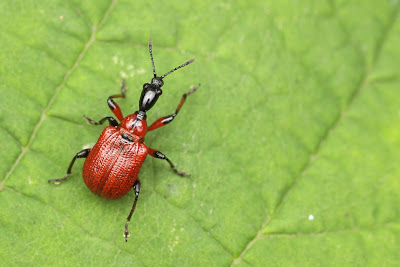It was time for the annual Viper's-grass monitoring, so Andy and I headed to Dorset for a couple of days. If you are not familiar with British plants, the name Viper's-grass is misleading:
Scorzonera humilis has nothing to do with snakes and it is not a grass. It is a relative of dandelions and is one of our rarest plants, restricted to two sites in Dorset and two in Wales. Next year it will celebrate its centenary as a British plant. It was discovered here in 1914 by Noel Sandwith when he was only twelve. A couple of years later he was given a day off school to show it to G C Druce, the doyen of British botany and one of the most fanatical plant listers of all time.
Before we continued the count the next morning, Rob, our reptile licensee, took us out to survey some real vipers on the heath. The sun was rarely showing itself, and despite it being almost the end of May, the weather was still stuck at the end of January. There were no reptiles basking on the track sides, but under the tins we found a couple of baby Slow-worms
Anguis fragilis.
Every time Rob turned over a tin I was hoping to see my first Smooth Snake
Coronella austriaca. Eventually my hopes were fulfilled as the lid was lifted on a large male, which Rob estimated was about fifteen years old.
We could see that it was indeed smooth, its scales lacking the keel down the middle that you find on other snakes. There were no more snakes on the heath, but around the farm there were more Slow-worms and a fine female Adder
Vipera berus.
The Smooth Snake, which feeds mostly on other reptiles, including smaller Smooth Snakes, is at home on the heath, but Adders are rarely found there. This is perhaps because there are not enough small mammals for them to eat. We found another Adder in a nearby large garden, as well as a Grass Snake and more Slow-worms. Having seen all the British snakes within an hour, we returned to the Viper's-grass field for more counting.
The cold weather made it hard to find insects, but Andy had a good find under some dung, with the very shiny scarab Trypocopris pyrenaeus. The surface of this beetle is smooth and almost mirror-like, more so than in any of our other large dung beetles.
To be certain of the identification you can flip the beetle over and look at the under side of the abdomen, which has small pits and hairs at the side, but is smooth in the middle. The slightly less shiny Trypocopris vernalis has hairs and pits all across the abdomen.
Kleidocerys ericae, a bug that lives on heather, was about, but we did not find many other insects, so it was left to a plant to provide us with another highlight. Pale Dog-violet Viola lactea is a scarce species of heathlands in the south-west, but it is sporadic in its appearance. It can remain dormant under gorse for years, waiting to flower when the spiky canopy above it is removed. Last year I saw it respond to a fire on Anglesey that had taken out large areas of gorse. Here at Stoborough it usually appears where gorse is cut back, and we found a few plants by the track in an open area.
By the time I get out to the heaths, the flowers are usually fading or gone, but after the slow start to spring, there were several in full bloom for us to admire this year.




















































